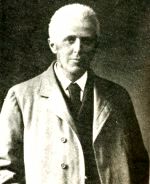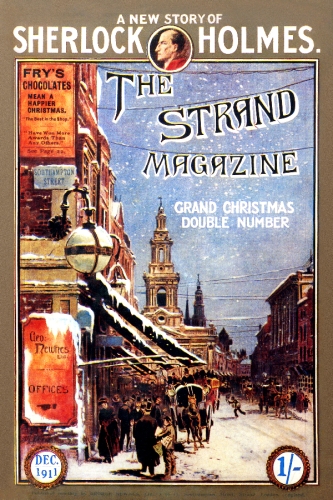Very few fictional characters created long ago have remained popular to this day. Tintin, a cartoon character created by Georges Prosper Remi in 1929, has remained popular since its creation (10). One of his Tintin books has been turned into a feature-length Hollywood movie (The Adventures of Tintin [2011]). Superman, Batman, and other comic book heroes have also made it to the big screen, but literary characters that have remained widely popular for more than a hundred years are rare. One such character has gained much cinematic attention over the years, and more recently with the release of Guy Ritchie’s popular mystery/action film, Sherlock Holmes (2009), and with expectation for the theatrical release of the second film in the series, Sherlock Holmes: A Game of Shadows (2011). The question is, “What makes Sherlock Holmes so popular?”
Sherlock Holmes is unique, widely appealing, intriguing, and eccentric, unlike many other characters that have appeared in books in the nineteenth century and later. What set Holmes apart from other literary characters is that he is highly intelligent, almost inhumanly so. He could discern facts that most people overlooked or were not aware of. In many of the Sherlock Holmes stories, he would look at a person or a client and guess by what means of transportation they had arrived at his door and what occupation they had. With such perceptive skills, using inductive and deductive reasoning, he was able make generalizations that were almost always correct. The only time he was actually outsmarted occurred in the story “A Scandal in Bohemia” when Irene Adler evades and escapes from Holmes. She was the only person to outsmart him.
Besides having a high degree of intelligence, Holmes was eccentric. In “A Study in Scarlet”, he was not aware that the Earth orbited around the Sun, to Watson’s amazement. Through the character of Watson, Doyle wrote:
 Other eccentricities of Sherlock Holmes include his addiction to cocaine, which he injected by a needle (3). When Holmes was between cases, he would often get restless as his active mind sought some kind of thing to engage itself with. To calm his mind, Holmes took cocaine, a substance which was not illegal at the time (3). Another oddity of the eccentric detective is the way he stored and collected certain objects. Unlike most people who smoked, Holmes kept his pipe tobacco in the toe of a Persian slipper (9). His papers from different cases were stuffed in various nooks and crannies of his living room because he hated to get rid of them. If that wasn’t enough, Holmes had a strange and irritating habit of playing the violin late at night, to his landlady’s displeasure (9).
Other eccentricities of Sherlock Holmes include his addiction to cocaine, which he injected by a needle (3). When Holmes was between cases, he would often get restless as his active mind sought some kind of thing to engage itself with. To calm his mind, Holmes took cocaine, a substance which was not illegal at the time (3). Another oddity of the eccentric detective is the way he stored and collected certain objects. Unlike most people who smoked, Holmes kept his pipe tobacco in the toe of a Persian slipper (9). His papers from different cases were stuffed in various nooks and crannies of his living room because he hated to get rid of them. If that wasn’t enough, Holmes had a strange and irritating habit of playing the violin late at night, to his landlady’s displeasure (9).Sherlock Holmes and Watson’s unique personalities and Holmes quirkiness came from Arthur Conan Doyle’s life experience. While pursuing a medical degree at the University of Edinburgh, Arthur Conan Doyle quickly got bored and began to find that his teachers were more interesting than the subjects they taught. One particular teacher made an impression on Doyle that led to the development of his famous character, Sherlock Holmes. Dr. Joseph Bell, one of Doyle’s professors, stressed using a method where one is to pay close attention to small details, and then arrive at a general conclusion (1). He liked to impress students by guessing a person’s profession (1). Much like Holmes, Bell liked to use all his senses to observe and make accurate diagnoses. Using a real person as an inspiration for his protagonist and livening Holmes up with a distinct personality made Doyle’s character highly unique and interesting. The medical training Arthur Conan Doyle received also gave him the experience to accurately portray Dr. John Watson, Holmes’ friend and associate. This training also lent to Doyle a desire to create a character that stuck rigidly to a scientific process of solving crimes, which has greatly influenced detective fiction and has inspired many writers and film makers. One example is found in David Shore who is the executive producer and creator of the TV show House. Shore said, in an interview for Zap2It, that Dr. Gregory House, the main character of House was inspired by Sherlock Holmes (2).
While solving cases, the Sherlock Holmes stories brought the reader into the story so that the reader could feel as if he or she were part of the investigation. Watson, who had ordinary powers of observation, kept the story interesting and understandable, serving as a character the average person could identify with. In the period of history in which the Sherlock Holmes adventures take place, forensics was in its infancy (7). Holmes was using methods similar to what police and detectives would use decades later. People in the late nineteenth century were curious about such new, “cutting edge” methods of crime solving, since forensics was still mostly a novelty (7). The “novelty” of crime solving in the Sherlock Holmes cases came from Holmes’ ability to solve the presumably unsolvable by his sheer brilliance and acute observations, along with some contributions from Watson. Holmes often asked Watson what he thought of something, and after hearing Watson’s observation, Holmes would lead the reader to wonder if it wasn’t something more than what met the eyes--something completely different than what Watson (or the reader) had assumed. This made the mystery solving much more interesting than if Holmes had just spelled out all he thought or observed without leaving time for the reader to guess.
Besides being interesting and “novel” during their time, Sherlock Holmes stories were convenient. The stories were short enough so that people riding a train could read an entire mystery before reaching their destination (4). If they happened to miss some of the previous stories, there was no worry. Being brief, the Sherlock Holmes cases were published in their entirety and could be read separately. If a reader’s budget was tight, there was no need to be concerned. Most of the Sherlock Holmes cases were first published in a periodical, The Strand Magazine. In this medium, the stories were quite affordable and readily available. With an emerging class of literate people, the Sherlock Holmes stories were devoured by a growing readership (8). There was such a demand for the stories that when Arthur Conan Doyle had Sherlock Holmes fall to his death in one story (“The Final Problem”), the outcry from his fans caused him to resurrect his famous detective of Baker Street, and Holmes appeared in several more short stories and novels. No other fictional character has gained and continued to hold such popularity for so long.
In conclusion, Holmes is unique and eccentric, having wide appeal and popularity, even to this day. Part of this may be due to the influence of one of Arthur Conan Doyle’s professors, Dr. Joseph Bell, who was an inspiration for the character of Sherlock Holmes. The medical training Doyle received at the University of Edinburgh also gave him the background needed to create Watson. With Watson serving as a representative for the reader and a balance to the eccentric Holmes, Doyle was able to bring his fans into the story to make them feel as if they were present with Watson, trying to help Holmes solve each case. Readers could peruse a Sherlock Holmes story at their convenience, for a low price, and in one sitting. The numerous movies made over the years have also done their part to make Holmes more widely known. All these facts mentioned above, together, have contributed to the enduring popularity of Sherlock Holmes.
Works Cited
(2) "Connections Between House and Holmes." housemd-guide.com. MIS, Inc, n.d. Web. 30 Nov. 2011.
(3) Dalby, J. Thomas, PhD. "Sherlock Holmes’s Cocaine Habit." bakerstreetdozen.com. Charles Prepolec, n.d. Web. 30 Nov. 2011.
(4) Dowd, Vincent. "Sherlock Holmes' enduring popularity." BBC.co.uk. BBC, 23 May 2009. Web. 29 Nov. 2011.
(5) Doyle, Arthur Conan. A Study in Scarlet. New York: Penguin Press, 1982. Print.
(6) Doyle, Arthur Conan. The Original illustrated 'Strand' Sherlock Holmes. Ware, England: Wordsworth Editions, 2001. Print.
(7) Leadbetter, Claire. "Why were the Sherlock Holmes stories so popular when they were first published and why do they remain so popular now? What evidence is there to support these views?" kspot.org. quantpsy.org, n.d. Web. 29 Nov. 2011.
(8) "Mystery Time Line." MysteryNet.com. MysteryNet and Newfront Productions, Inc, n.d. Web. 30 Nov. 2011.
(9) “Sherlock Holmes Biography.” sherlock-holmes.co.uk. sherlock-holmes.co.uk, n.d. Web. 30 Nov. 2011.
(10) "Tintin in the Land of the Soviets." Tintinologist.org. Tintinologist.org, n.d. Web. 30 Nov. 2011.










.jpg)

0 Response to "What Made Sherlock Holmes Very Popular over the Decades?"
Post a Comment